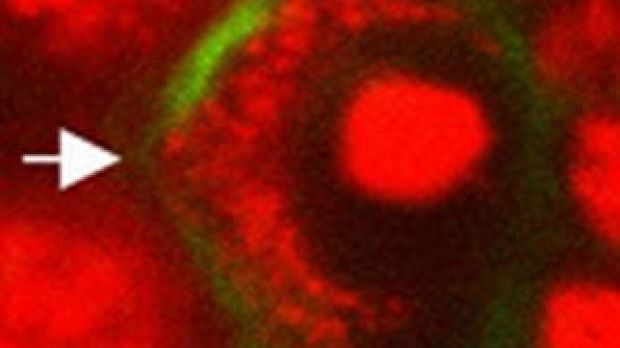Some parasites produce sex biased effects, being more harmful for one sex than for the other.
Such examples were found both in humans (Toxoplasma) and fruit fly species in Canada.
In 1920, biologists discovered a male-killing bacterium, called Wolbachia (above), in many butterfly species in southeast Asia.
A recent research made at UCL (University College London) revealed that a high-prevalence of male-killing bacteria in a population changes the sexual behavior of the insects, increasing female promiscuity and male tiresome.
While the female butterflies turn more sexually rampant, the males put less effort into mating. "Male-killling bacteria are found in many insect species including the British ladybird. We wanted to know what the effect of the bacteria is on the mating system, and here we've shown that butterfly mating patterns are strongly determined by the killer bacteria", said Dr Sylvain Charlat, of the UCL Department of Biology.
"Contrary to expectation, we also find that female promiscuity actually rises when male numbers are reduced. Greater numbers of female partners leads to fatigue in males. They start producing smaller sperm packages. Unfortunately, the female butterflies instinctively know that the packages are smaller and that their chances of having been impregnated after mating are lower than usual. This just makes them more rampant!"
The Wolbachia passes from the female to male offspring and the bacteria finishes the males even in the embryo phase, while the female carrying the bacteria are resistant.
This leads to a disproportionate sex ratio in some areas of one male to one hundred females. "It's amazing that the numbers of male butterflies can get so low and yet the population is still sustainable and stable. You don't need many male butterflies to continue the population successfully. This is partly because the decision to mate is mainly under female control and because males have a high mating capacity", said Dr Greg Hurst, of the UCL Department of Biology and a senior author of the study.
The research was made on Hypolimnas bolina, great eggfly butterfly (below), with a vast areal from Madagascar and South/Southeast Asia to Japan, Australia, and New Zealand, passing through many Pacific Islands.
The different island populations were ideal for research as each island is differently affected by Wolbachia, so it will present different sex ratios. The team assessed the sex ratio in 20 populations, female mating frequency and the size of the male sperm package. The female's number of partners was affected by the sex ratio, more specifically by the size of the sperm package.
The researchers found that the promiscuous active female behavior was triggered only where the males turned so rare that female virginity percentage was increasing.

 14 DAY TRIAL //
14 DAY TRIAL // 
